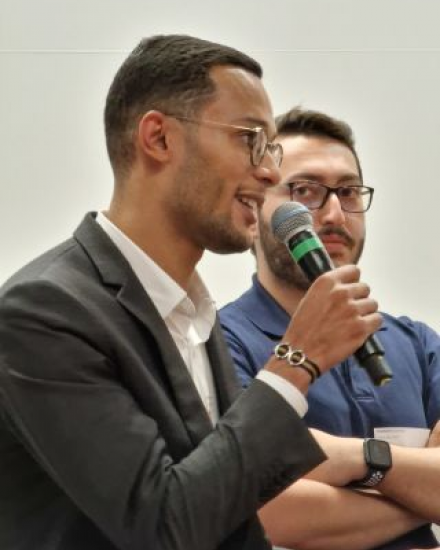Held two full working days a week over January to April of the MSc in Strategy & Consulting program, the Field Missions plunge students into the realities of tackling the complexities of a wide spectrum of companies with a diversity of needs. The just-released White Paper pools together the broad range of missions, sectors and types of company represented but, above all, the sometimes-harsh reality of getting to grips with what a company wants and where it needs to head. Strategizing in action.

How, when, and where
This focal part of the curriculum offers the perfect illustration of the program's insistence upon “strategizing” – the capacity of strategists to think and act in complex situations. Taken by the 54 students of the 2021/22 class, split into groups of 2 to 4, and set to work on 19 different projects that saw them working full-time two days a week as fully integrated members of the participating companies, the challenge was as broad as it was enticing. The companies ranged from CAC40/SBF120-listed organizations, to SMEs and NGOs. The sectors included as wide a range as healthcare, automotive, insurance, and media, and projects were conducted in France, Switzerland, and the USA.
The in-company period running January to April followed project identification and selection in September to November and the introduction of each student team to their companies in December. With the need for organizational transformation greater still in the wake of COVID-19 it was time to get to work. Fast forward to September 2022 and the fruits of the students' labors have been carefully compiled in one White Paper
Assessing the challenge and where to begin
Across all the projects, the first challenge and goal are to establish how a company can achieve its intended goal. In essence, a strategic vision is a self-projection by a company into a desired future, making the careful design of a transformational project even more necessary to help support it in hopefully meeting its target. Knowing how to design and lead such a project for a strategic consultant is the first, crucial step, as the students found out. From the software company struggling with its billing process and the beauty e-retailer re-considering its brand structure to the HR firm looking to construct a new consulting offer and the pharmaceutical business unit wanting to branch out to new markets, establishing the right process is of paramount importance.
The White Paper breaks down the missions into six main types of challenge: Optimization & Processes, Business Model Development, Implementing Corporate Social Responsibility, Developing an HR Offer, Developing a Growth Strategy, and Developing an Internalization Strategy. A wide range of strategic needs and goals but, as the students discovered, in many cases requiring certain common approaches – discussion, interviewing, investigation, identification, definition, benchmarking, testing, analyzing, questioning….

Dealing with complexity
Transformational projects are complex by nature, not least because often the actors within the companies underestimate just how difficult achieving their strategic vision may be. Once they have bought into the idea of how necessary a structured, strategizing project is and initial recommendations have been made, the consultant may then have to deal with resistance to change or, in some cases as experienced by the emlyon students, companies who have misjudged their existing market as saturated and therefore, in reality, do not necessarily need to expand just yet. By establishing marketing roadmaps, studying and presenting the competition, explaining the need for a new business model before a new strategy, or questioning the internal structure of some companies, the student-consultants were confronted with an additional challenge – getting buy-in from their “clients” of their assessment of the situation, following their analysis of the company and landscape.
A juggling act in the name of Agility
The direct contact and consultation process through which many students went, be it with employees or top executives, underlines the agility that they needed to display and will need to do once in the industry “for real”. Transformational projects are by no means conventional as they inevitably involve the full range of stakeholders, who may not share the same vision and certainly not the same potential role in achieving that vision. Simply hatching a plan (Formulation) and then getting all hands to the deck (Execution) is the absolute polar opposite of the task confided to a strategic consultant. It involves a process of back and forth – analyzing the inner workings of the company whilst studying the competition, looking at the local market but also with an eye to abroad, getting feedback from the workers on the ground whilst hearing the vision of top brass… However necessary and/or achievable were the 19 projects entrusted to 54 emlyon students, common to all was the vital skill of agility required from the outset to the conclusion.


